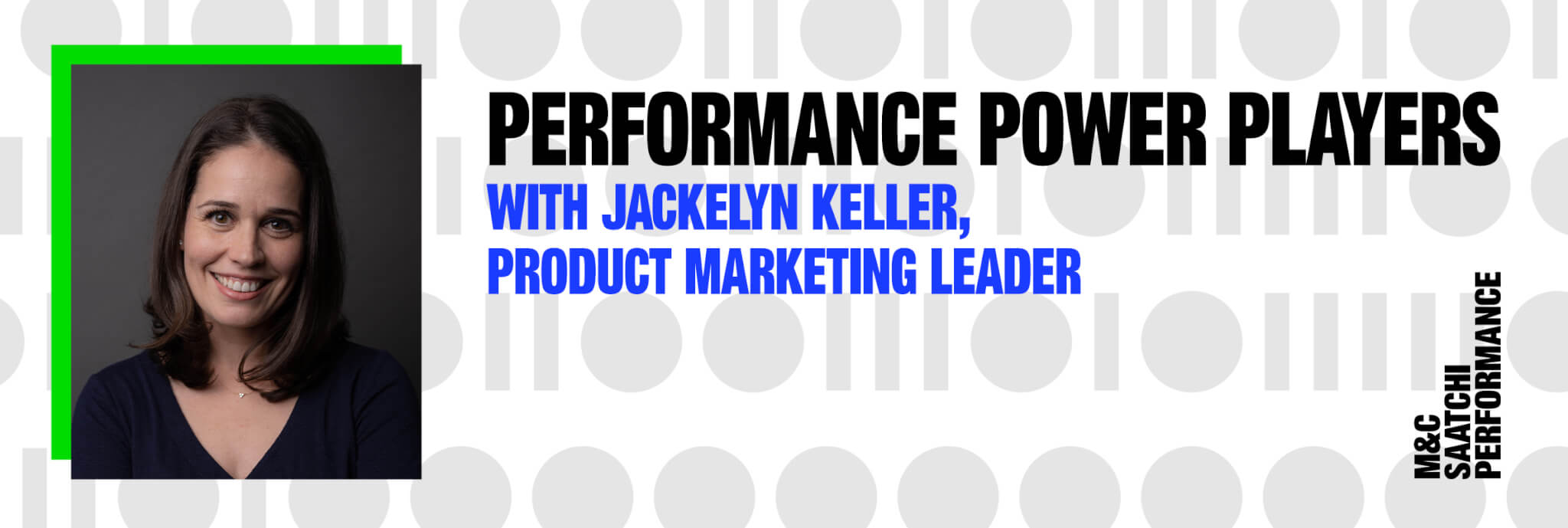Performance Power Players: Jackelyn Keller


After several years at Samsung, Jackelyn Keller is keenly aware of the connected TV and streaming entertainment landscape. A dominant force in the smart TV market, Samsung is leading the way in connecting viewers with a seamless entertainment experience, even as linear TV viewership declines. We sat down with Jackelyn to discuss the current state of the OTT ecosystem, and the importance of data transparency and granular attribution in charting out an effective streaming TV ad strategy.
Key takeaways:
- The COVID-19 pandemic has driven significant growth in the streaming and connected TV space. Only 3% of Samsung smart TV owners are choosing strictly linear TV channels for entertainment.
- Programmatic CTV is powered by profound technological advances rewriting the advertising landscape. It brings the best parts of programmatic display to the largest screens — and most impactful ad experiences — in the home. The software powering smart TVs combines with the software behind programmatic to make CTV the future of advertising.
- Understanding ROAS is essential for advertisers, which is why they should look for CTV partners that provide data transparency and granular attribution.
- Consumers are turning to smart TVs for content selection guidance and a more seamless viewing experience. To accommodate viewers and help the discovery process, companies like Samsung are taking the streaming experience even further with ad-supported programming and cloud gaming capabilities.
What is your take on the CTV vs. linear TV advertising debate?
We’ve seen significant growth in the streaming and CTV space, largely driven by the global pandemic. About 75% of Samsung smart TV owners are enjoying content through both linear and streaming platforms, and just 3% of viewers are choosing linear-only channels. At the end of the day, this is a CTV-centric ecosystem that’s redefining the future of advertising.
How does Samsung Ads complement the hardware side of the business?
The advantage with programmatic CTV stems from direct access to consumers who have welcomed Samsung smart TVs into their homes. With 60 million active smart TVs in the US and the largest single source of TV data in the market, this massive footprint — coupled with the scale of our data — allows more knowledge about consumers, drives more engagement for advertisers and delivers more results. This includes enhanced audience strategies, access to unique inventory, reach and frequency management, and total campaign measurement for marketers to develop a robust streaming TV ad strategy . The Samsung Ads platform delivers high-quality consumer experiences with more brand-safe business outcomes for advertisers.
How does Samsung DSP ensure deterministic 1:1 audience attribution? Is it based on a last-touch or multi-touch methodology?
Samsung’s device graph is based on 1:1 deterministic data. This data is then combined with other digital signals received from running campaigns. Advertisers can then choose between using post-view, post-click, or a combination to determine how they would like to measure the outcome. Samsung DSP also allows users to establish a baseline control audience to calculate lift against a similar population accurately.
How has the growth of programmatic CTV advertising affected Samsung’s product roadmap and/or informed company strategy?
The growth of programmatic CTV illustrates consumers’ evolving viewing preferences and their growing engagement with smart TV devices. Samsung’s strategy has always been driven by our values, like putting people at the center of everything we do, as well as a commitment to innovation. Samsung’s device-level data is a powerful window into consumer behavior.
Data indicates that consumers are turning to their smart TVs for content selection guidance and a more seamless viewing experience, and we continue to launch and improve products to delight our customers and help them during these moments of discovery or intent. In 2016, Samsung launched TV Plus, a free, ad-supported smart TV video service with nearly 200 channels available. 2022 saw the launch of Samsung Gaming Hub, offering a seamless cloud gaming experience — no downloads, storage limits, or consoles required — in one place on Samsung smart TVs.
What is your prediction for the future of programmatic CTV?
As viewing time coalesces around CTV and streaming, advertisers will expect more efficiency due to greater supply. We also expect measurement standardization and reporting solutions to match the ad tech capabilities we have today, with an emphasis on accuracy and transparency. The winners in programmatic CTV will be the players who have a direct relationship with consumers and the ad tech to facilitate seamless activation for advertisers.
Thanks for chatting with us, Jackelyn!
About Jackelyn Keller
Jackelyn joined Samsung Ads in 2020 after more than a decade of experience in ad strategy and marketing at various TV networks and digital publications. In her role, Jackelyn worked in Samsung Ads’ Global Product Marketing team to drive better business outcomes in an advertising ecosystem spanning millions of smart devices across TV, mobile, and desktop. She also serves as an Adjunct Professor of Marketing at the Fordham Gabelli School of Business in New York City, where she earned her MBA in Communications and Media Management.
Interested in becoming a Performance Power Player, contact us if you would like to be considered as a contributor to our blog

